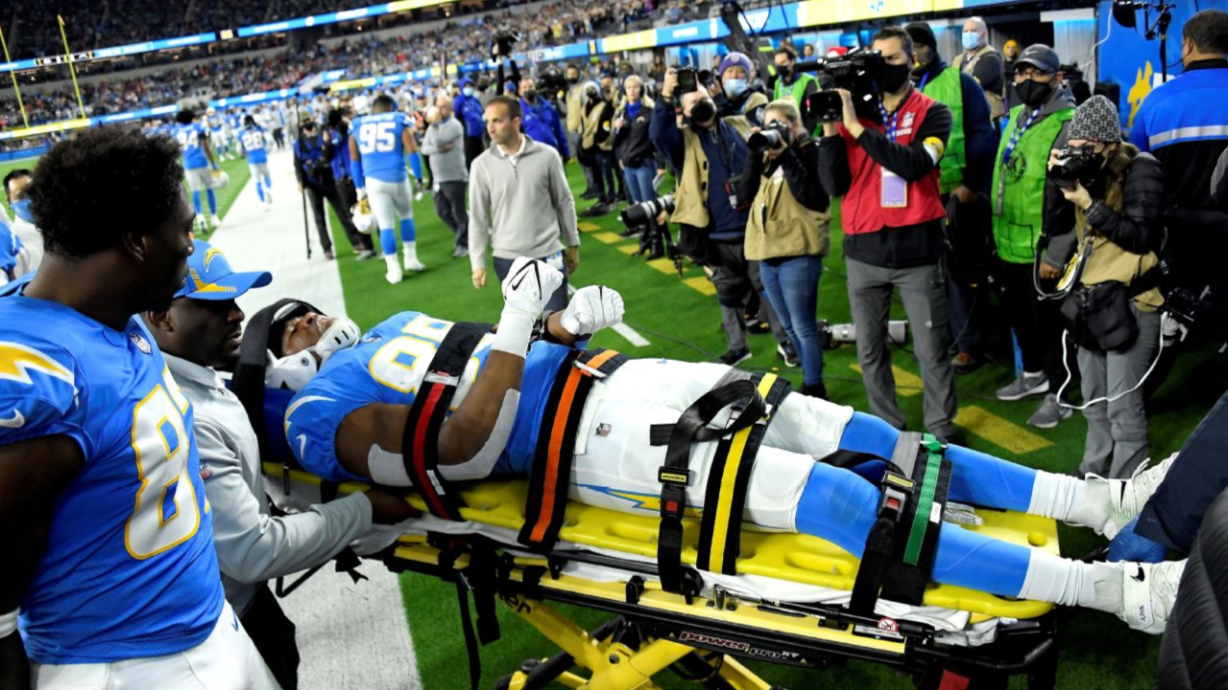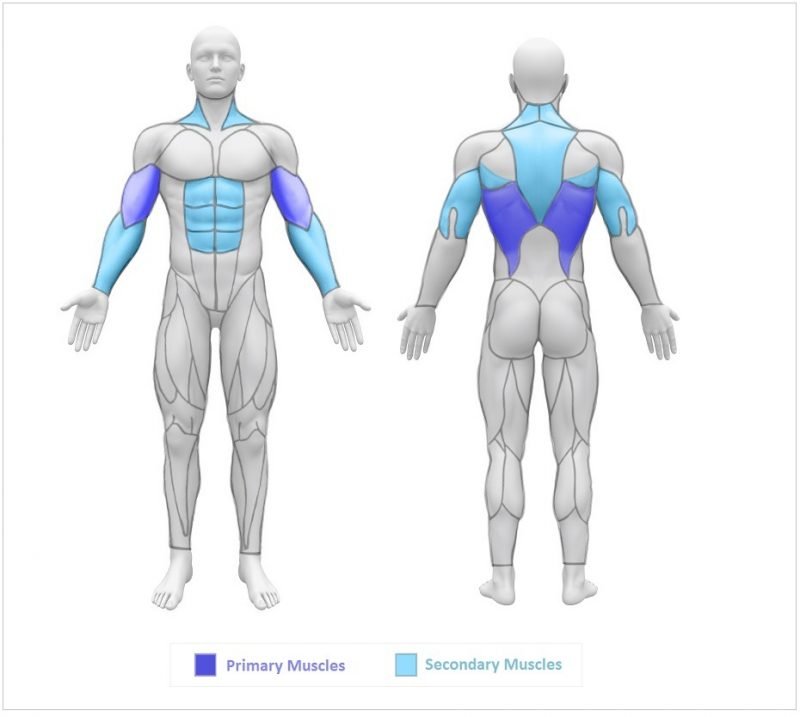Chargers’ Donald Parham on a gurney, following fall in mid-game. Image from [1].
A couple of weeks ago, many die-hard football fans witnessed one of the scariest injuries that can occur on the field. Only in the first quarter, it seemed all but certain that the Chargers would score the first touchdown of the game. However, a dropped pass in the endzone by the team’s tight-end, Donald Parham, suddenly turned into a moment of chaos. Taking an abnormal fall, his arms suddenly locked up in the air as he laid out on the turf unconscious. The cameras zoomed into the scene to display his unmoving body, showing the hundreds of thousands of viewers exactly what a traumatic brain injury looks like. Though Parham was ultimately taken to the nearby medical center and discharged the following day, fencing response — the reflex that Parham exhibited in that Thursday Night Football game — has been a hot topic among football fans and non-football fans alike. Let’s get into the science behind this frightening experience.
Image from [2].
Fencing response is often seen in those who are knocked down or violently hit during full-contact sports such as football, rugby, and boxing, to name a few. After one experiences a substantial blow to the head that impacts the brainstem, a possibility is that their arms lift up into the air with their forearms flexed for several seconds [3]. Specifically, rotational forces resulting from a hit can shock the reticular activating system (RAS), which is the region that maintains consciousness in the brainstem. Since concussions are not able to be detected via methods such as MRI or CT scans, this fencing response position is one of the most noticeable indicators for medical professionals to determine the severity of the head injury. In fact, a 2009 study found that after analyzing 35 videos showcasing a hit to the head and an immediate loss of consciousness, roughly 66% showed the fencing response [4]. It’s completely reflexive; the shock of the trauma suddenly activates primitive muscle reflexes that are present in human infants [5]. For example, lifting a five-year-old infant off of a bed will cause them to flex and extend their arms — exactly what these athletes seem to do. As a result, they appear to lie limp and reach out into the air for something that’s not there.
Whenever an athlete falls awkwardly on the field and stretches their arms out for a few seconds, that’s not a unique celebration. As a definite indicator of a traumatic brain injury, there’s a reason that they don’t return for the remainder of the game.
References
ESPN. https://www.espn.com/nfl/story/_/id/32885083/los-angeles-chargers-te-donald-parham-put-neck-brace-carted-off (accessed Jan 24, 2022)
Semantic Scholar. https://www.semanticscholar.org/paper/Brain-injury-forces-of-moderate-magnitude-elicit-Hosseini-Lifshitz/3e44f46ea098f4f63317fb95070053202c2a79e6 (accessed Jan 24, 2022)
Healthline. https://www.healthline.com/health/fencing-response (accessed Jan 24, 2022)
Hosseini A.H.; Lifshitz J. Brain injury forces of moderate magnitude elicit the fencing response. Med Sci Sports Exerc. [Online] 2009 Sep;41(9):1687-97. https://pubmed.ncbi.nlm.nih.gov/19657303/ (accessed Jan 24, 2022)
Bleacher Report. https://bleacherreport.com/articles/1494620-stevan-ridleys-concussion-biomechanics-of-his-injury-fencing-response (accessed Jan 24, 2022)







